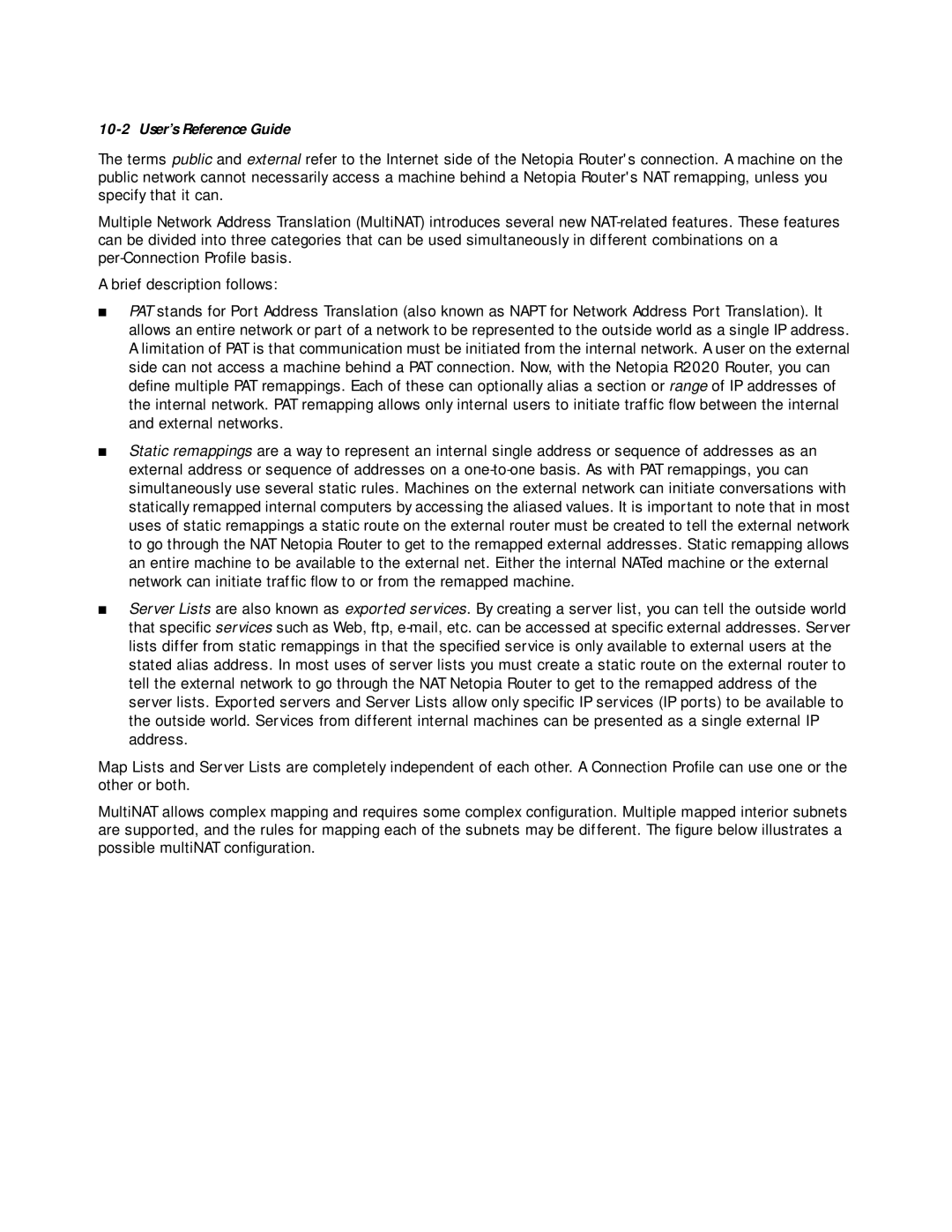10-2 User’s Reference Guide
The terms public and external refer to the Internet side of the Netopia Router's connection. A machine on the public network cannot necessarily access a machine behind a Netopia Router's NAT remapping, unless you specify that it can.
Multiple Network Address Translation (MultiNAT) introduces several new
A brief description follows:
■PAT stands for Port Address Translation (also known as NAPT for Network Address Port Translation). It allows an entire network or part of a network to be represented to the outside world as a single IP address. A limitation of PAT is that communication must be initiated from the internal network. A user on the external side can not access a machine behind a PAT connection. Now, with the Netopia R2020 Router, you can define multiple PAT remappings. Each of these can optionally alias a section or range of IP addresses of the internal network. PAT remapping allows only internal users to initiate traffic flow between the internal and external networks.
■Static remappings are a way to represent an internal single address or sequence of addresses as an external address or sequence of addresses on a
■Server Lists are also known as exported services. By creating a server list, you can tell the outside world that specific services such as Web, ftp,
Map Lists and Server Lists are completely independent of each other. A Connection Profile can use one or the other or both.
MultiNAT allows complex mapping and requires some complex configuration. Multiple mapped interior subnets are supported, and the rules for mapping each of the subnets may be different. The figure below illustrates a possible multiNAT configuration.
